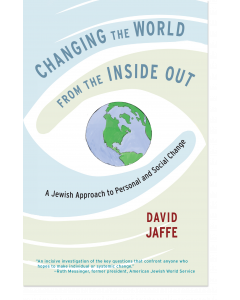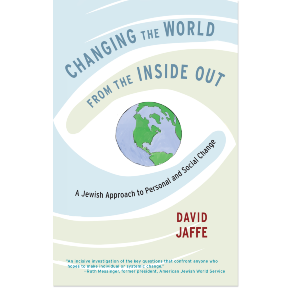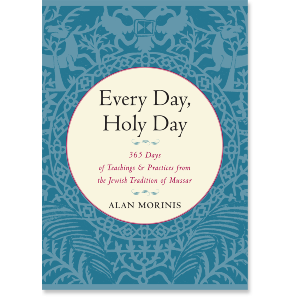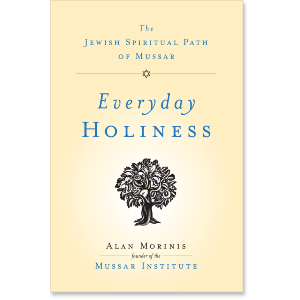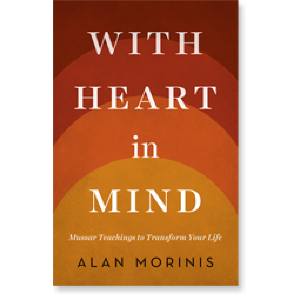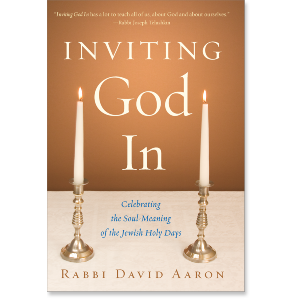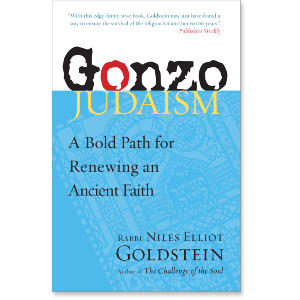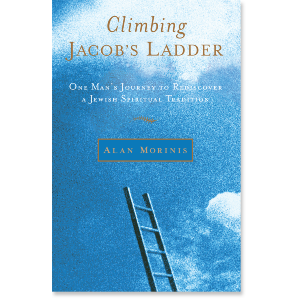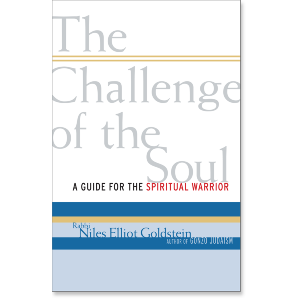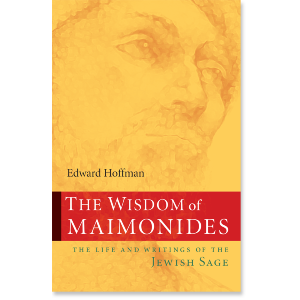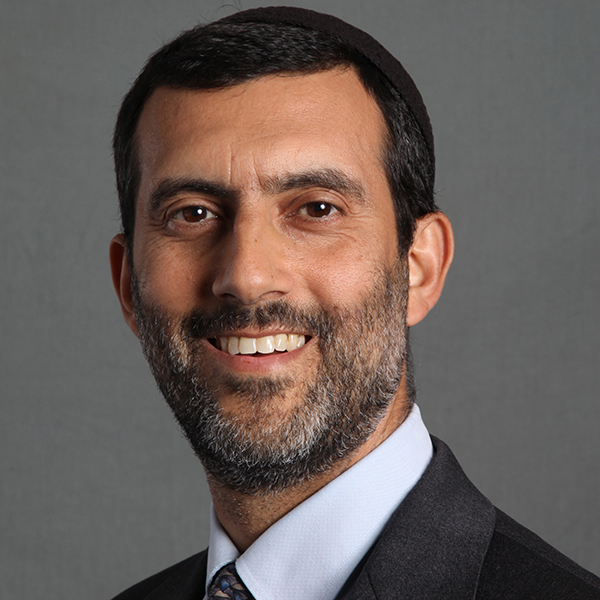

David Jaffe
David Jaffe is a rabbi, a social worker, and an educational consultant to many major Jewish institutions in North America. He’s a nationally recognized leader in the field of Mussar and applied Jewish ethics, and he is a frequent speaker at synagogues and Jewish conferences around the country. He’s spent twenty-five years teaching and working in various areas of social justice outreach, including homelessness and interfaith community organizing.
David Jaffe
GUIDES
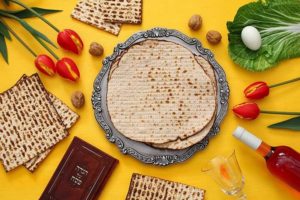
by David Jaffe, author of Changing the World from the Inside Out

The Passover prayer book, or Haggadah, that my family used when I was growing was in English, Hebrew, and transliteration of the Hebrew. The story told is that when I was nine years old, I cut out strips of white paper and taped them over the English and transliteration, wanting only to read the original Hebrew language. A sure sign of a budding zealot or rabbi. While I did become a rabbi, and not a zealot, what I didn’t appreciate then was that the stories in the Haggadah were only one half of the action on Passover. It would take me many more years to learn that eating the special foods of Passover can be an embodied spiritual practice in itself that helps us internalize the main point of the holiday.
It would take me many more years to learn that eating the special foods of Passover can be an embodied spiritual practice in itself that helps us internalize the main point of the holiday.
What is the main point?
According to Rabbi Yitz Greenberg, “The Jewish religion is founded on the divine assurance and human belief that the world will be perfected. Life will triumph over its enemies—war, oppression, hunger, poverty, sickness, even death.” (The Jewish Way, p. 18)
Passover is the Jewish holiday that testifies to the ongoing belief in and determination to achieve this redemption. The central ritual of Passover, the festive meal called the Seder, serves as the main vehicle for reaffirming this belief.
Passover is the Jewish holiday that testifies to the ongoing belief in and determination to achieve this redemption.
The rabbis of old, who developed the annual Passover night rituals contained in the Haggadah, set for themselves a very high educational bar. The Haggadah itself throws down the gauntlet, saying, “In every generation, one is obliged to regard themselves as though they themselves had actually gone out from Egypt. . . .” The experience of oppression and freedom needs to be personal if Passover is going to serve its function of reminding us to stay at the work of liberation and redemption. At different times over 3,000 years of Jewish history—including the Crusades, immigration, the Holocaust, and return to the Land of Israel—not much creativity was needed to feel oppression and the yearning for freedom. But in times of relative tranquility we need the rituals of Passover to generate this first-hand experience to keep us from drifting into complacency in our comfort and forgetting our covenantal role in nudging the world toward universal redemption.
How to get people to relate personally to the message? Tell stories and literally digest the message! The Haggadah is not an expository essay or history of the Exodus from Egypt. Rather, it is a series of stories about the experience of slavery and the miracle of freedom. We are all encouraged to be storytellers this night and share our own freedom experiences or those we’ve heard about. When I can locate myself and my aspirations in the real stories of others, I now have a place and know this whole freedom business is about me too. I’m invested in keeping the story going.
The other way to personalize the message is to embody the experience of oppression and freedom through food. The ritual eating of Matzah (unleavened bread) and Maror (bitter herbs) communicate the holiday’s central message by literally putting it into our body. I want to share two ways of doing these rituals that have been meaningful to me over the years. If you follow these instructions, I guarantee you will experience these rituals differently.
Meditative Matzah
Matzah is any wheat (or barley, spelt, rye, and oat) flour that is mixed with water and cooked before 18 minutes pass, which is the time that the dough begins to rise. In some cultures the Matzah looks like a large cracker, and in others it is softer, like a tortilla. In my family we like using the hand-baked, large round Matzahs with ample burned parts to give us that old-time taste that is hard to get with the nice, square, uniform-shaped, machine baked versions.
Eating matzah on the first night of Passover is actually the only form of eating instructed by the Torah that we still have today. All the other things our ancient scriptures tell us to eat are related to sacrifices that fell by the wayside of history.
In an ironic way, Matzah, this poor person’s bread, represents freedom. It is the bread the Israelites ate as they left hundreds of years of slavery behind.
In an ironic way, Matzah, this poor person’s bread, represents freedom. It is the bread the Israelites ate as they left hundreds of years of slavery behind.
Instructions:
Each person at the table takes a piece of matzah. After the blessings are said, everyone remains silent for the next few minutes while the Matzah is consumed. Savor your Matzah. Look at its contours. Feel it with your fingers. Smell it. Slowly chew it and let yourself taste the flour. Eat it slowly and imagine the Israelites quickly leaving the only home they ever knew, refugees on the run from an oppressive master going into the unknown, but as free people. Chew some more matzah and hear the sound of others chewing. At an agreed upon time the leader calls everyone’s attention back for the next ritual.
Tasting the Sting of Oppression
The bitter herbs are the other major ritual food item for embodied practice. Many people use horseradish because of its sharp bite. In an instructive twist in Jewish law, the bitter herbs must be chewed before swallowed, whereas one technically fulfills the obligation of eating matzah even if swallowed whole without chewing. We need to taste the bitter herbs to embody how life is embittered by oppression.
We need to taste the bitter herbs to embody how life is embittered by oppression.
Instruction:
Each person takes a portion of bitter herb on their own plate. After the blessing, everyone remains silent again as the bitter herbs are consumed. Slowly chew the horseradish, or other bitter herbs, letting the burning juices sink into your tongue and open the sinuses. (Warning: Too much bitter herb can actually hurt so take only as much as you think you can handle. The point is to feel the burn, not to hurt yourself). As you are chewing and feeling the sting, consider the following.
The Mussar teachers explain that the Yetzer Harah’s (the Inner Adversary) main strategy is to keep us busy, moving so fast that we don’t absorb our own reality or the reality of the world around us. There is so much suffering in the world. Our own suffering and the suffering of others—migrant workers who harvest our food being paid less than a living wage who expose themselves to dangerous pesticides and contract illnesses and do not have the health insurance needed to heal. Subsistence farmers in Central and South America forced by economic need to produce only one type of crop, no longer having the ability to feed their own families. Or closer to home, a relative may be silently suffering health problems, family strife, or economic vulnerability. The bitter herbs practice is teaching us that we can’t be numb to suffering if it is to have its cathartic and motivating impact. Our busyness urges us not to look, not to dwell, not to really feel—even our own suffering. However, it is the bitter taste that reminds us that this is not ultimately the way the world should be. It is possible to end suffering and we are key players in the process.
May this Passover help us know, in a fully embodied way, that we can create change. The conditions of our lives are not permanent or inevitable. Our human inheritance is to be free and create relationships and communities that honor dignity of all creation.
For the Torah says: “You shall tell your son on that day, saying: ‘For the sake of this, Hashem did for me when I went out from Egypt.’” Not only our father did the Holy One, redeem, but also redeemed us with them . . .
Related Books
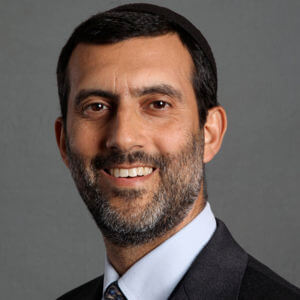

by David Jaffe
The Jewish calendar, like all religious systems, has particular ways of marking spiritual time. A weekly sabbath beckons us to stop, prayers for the new lunar month remind us of the constant opportunity for renewal, and the High Holy Days bring us face-to-face with our own mortality. These days are spiritual opportunities pregnant with possibility. We stand at this moment between the two most recognizable and holy days of the year—Rosh Hashana and Yom Kippur. Bursting with allusions to life and death, these festivals are collectively known as the “Days of Awe,” but that description is only a half-truth. These are actually the days of Awe and Love.
The balance of Awe and Love is a key to unlocking the spiritual potential of these days. For many Jews, their experience was all Awe, and its cousin, Fear. Talmudic imagery describes Rosh Hashana as the time God sits with the book of judgement open and reviews everyone’s deeds from the past year to determine who shall live and who shall die. I remember sitting in religious services as a child terrified that I might die in the coming year. Indeed, Rosh Hashana, which literally means, “Head of the Year,” is also referred to in the Bible as the "Day of Judgement." Not only that, but ten days later comes the most holy day of the year, Yom Kippur, a twenty-five hour fast that culminated these Days of Awe. To my young self, and to many Jews, these days seemed like an ordeal to get through, rather than an opportunity for profound spiritual renewal.
The missing ingredient was love, and it was there all along. Rosh Hashana and Yom Kippur are like two poles of a battery that exist in dynamic tension, rather than one monolithic experience of religious trembling. While Rosh Hashana is indeed Judgement Day, Yom Kippur is the "Day of At-One-Ment—a day of pure forgiveness and reconciliation. The Talmud calls Yom Kippur one of the two happiest days in the entire calendar. Two thousand years ago Yom Kippur was a great matchmaking day, when young men and women went out to the fields to meet and find their life partners, mirroring on a human plane the love and intimacy being played out on the Divine plane between God and the people. Yom Kippur is a fast day to help limited, flesh-and-blood humans get a taste of what it means to be a pure spiritual entity, without physical needs. While the day is filled with prayers for forgiveness, at one of the very first moments in the liturgy, God emphatically declares, “You are forgiven!” The rituals and poetic language of the day are designed to nurture an experience of deep connection and unconditional love.
Since love is the endpoint of this ritual process, why can’t we do away with the Awe, with all its fear and judgment? The answer lies in the central image and ritual object of Rosh Hashana, the ram’s horn, or shofar. The Bible also calls Rosh Hashana the "Day of Shofar Blasts" and the liturgy, indeed, calls for no less than one hundred blasts over the course of the morning prayer service. The shofar blast is a piercing, haunting sound. While in ancient times the shofar had many uses, including calling troops to war, on Rosh Hashana the blasts are designed to evoke different kinds of tears and wailing. It is literally a voiceless cry when, facing mortality, we are left with no words. The sound of the shofar is like a baby’s cry, designed such that it cannot be ignored. We cannot ignore the blasts, and we hope that God cannot either. The shofar physically and spiritually wakes you up to take stock of your life. This is the spiritual value of Awe. Awe wakes us up, like a splash of cold water, from our spiritual slumber. Once awake, spiritual growth is possible.
The key is not to stay with Awe, but to move to relationship, and Love. This is the move over the period of ten days from Rosh Hashana to Yom Kippur. Now awake, we know we have work to do. But we also know that we are deeply loved and our Divine lover is waiting for us, with a metaphoric hand stretched out yearning for us to reach as well. The Talmud and our later mystical sages teach us that this love is assured, and we just need to make the move toward closeness.
This balance of Awe and Love point us in the direction of a practice for these days of spiritual opportunity. In the Jewish tradition these are also known as the Ten Days of Teshuva, or Return. This is the best time of year to affect a return to our Source and to our highest selves. These are the three steps, and they draw from both the Mussar (applied Jewish Ethics) and Chassidic (practical mysticism) schools:
Step 1: Acknowledgement and Sensitivity
The first step in Return is to honestly acknowledge the reality of your life. How am I living in or out of alignment with my values? Am I being my best self? Is my wife or husband correct in those things they point out about the way I behave? Have I been too defensive to really take it in? Shame and embarrassment can keep us from facing the truth of our lives. We need to work through these powerful emotions to hold with the uncomfortable truth. This step takes courage and honesty with ourselves if we are to develop the sensitivity needed to grow. Awe can help. Awe wakes us up to acknowledge reality. A solid meditation practice is a big help in this stage so we can sit with the uncomfortable feelings as we become more aware. Journaling and chanting can also help own the reality of your life.
Step 2: The Power of Decision
Once you have acknowledged reality, you are in a better position to decide with awareness how you actually want to live your life. This may involve ceasing or starting certain behaviors or patterns of thought. The more work you’ve done to develop exquisite sensitivity to your inner life, the easier these decisions will be. The power of decision is a valuable tool, but it can be a blunt instrument. We want to use it sparingly in the growth and return process so not to extinguish our natural passion and zest for life.
Step 3: Joy and Love
The most refined step in the return process is accessing the deep joy that comes with living into a sense of mission. We all have a certain mission or missions in the world, and our soul knows when it is living in alignment with these callings. Often, the unacknowledged reality of our behavior is just the thing that keeps us from joining the flow of our calling. This is the role of love. Living into our deeply felt mission brings joy to our hearts and gives us access to rich wells of love—both for ourselves and to give to others. God’s love is one way to think of this overflowing well. This is Yom Kippur—the day of reconciliation, At-One-Ment and love. We are reunited with our lover and with our path in this world. We are aligned and ready to head out into the new year.
While Awe and its cousin Fear may be necessary to start a process of return, they cannot be the only guides. The great Mussar master, Rabbi Nosson Tzvi Finkel, taught that a process of return that is based only on awe and fear cannot sustain. Short-term change may take place, but it will never last. Only return motivated by love will sustain.
May we merit to point ourselves toward love this Jewish High Holiday season and embark on a path of return to our highest selves, to our deep mission, and to our commitment to each other that is not only sustainable in itself, but that creates the foundations of a sustainable future for all those around us.

